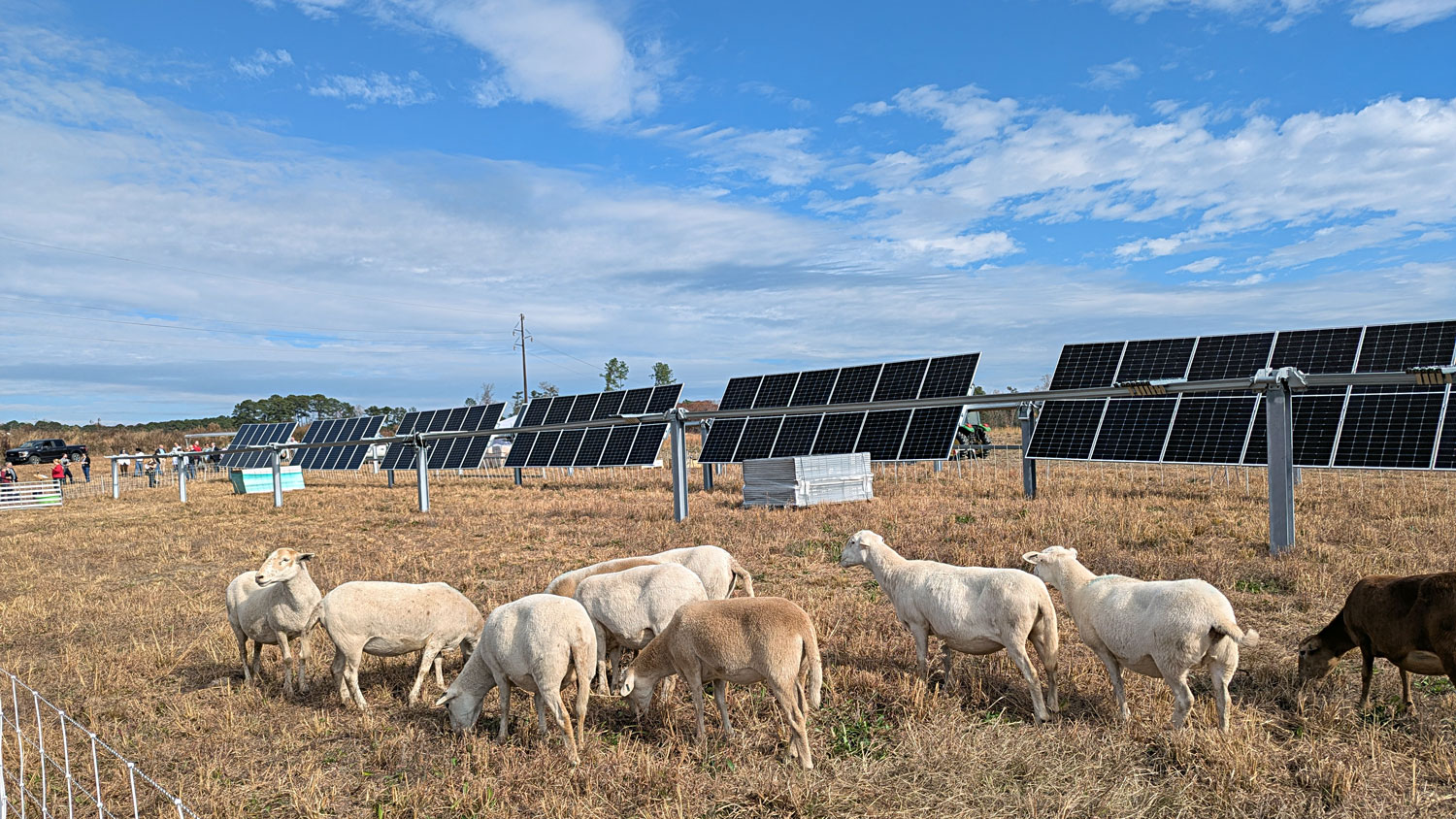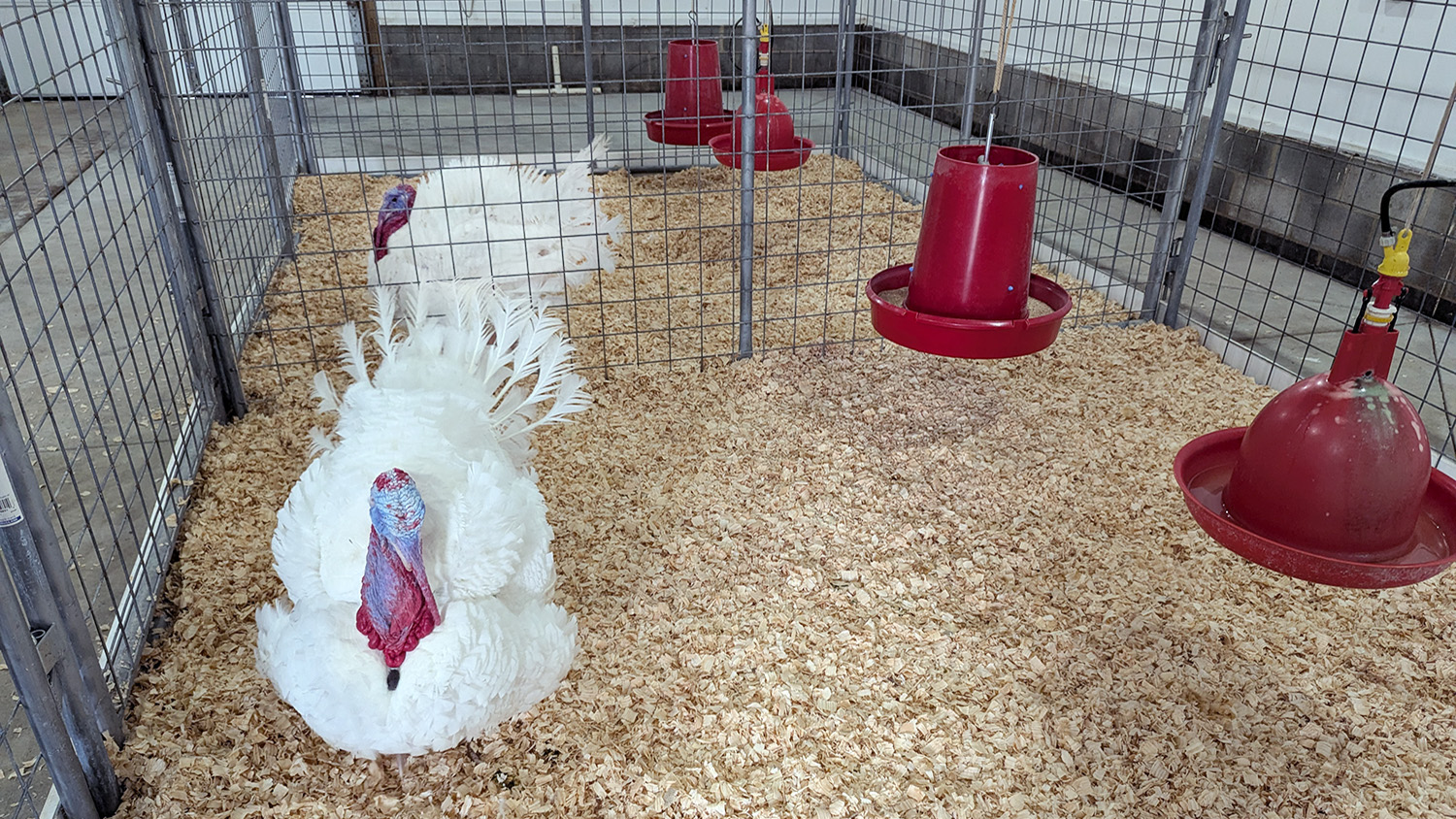Happy Campers
4-H camps are updated for future generations to enjoy.
Like many university-owned facilities, North Carolina’s five 4-H camps and educational centers suffered from years of deferred maintenance. And though the familiar rustic facilities held fond summer camp memories for generations of 4-H’ers, 4-H youth development leaders knew it was time for an upgrade.
In 2007 and 2008, the N.C. General Assembly allocated $11.5 million for renovations and new facilities at the state’s 4-H camps. Summer 2010 marked the first camping season that 4-H’ers were able to utilize many of these new facilities.
4-H is N.C. Cooperative Extension’s youth development program, serving more than 218,000 youth across the state with the help of 21,000 4-H volunteer leaders.
“It is extremely gratifying to see so many wonderful improvements to our North Carolina 4-H camps and conference centers. Most of our camps still looked exactly as they did in the late 1950s when I was a 4-H camper,” said Larry Hancock, Extension 4-H specialist and director of the camping program. “Improvements have not only updated our camps, but they have added to camper safety and comfort. Additionally, the capital improvements have enhanced programming capabilities.”
At Betsy-Jeff Penn 4-H Educational Center near Reidsville, campers enjoyed a new swimming pool, with an attached bathhouse for the first time. In addition, eight cabins were renovated and mechanical systems upgraded. The recreation hall got a heating system to extend its use year-round, and multiple buildings got new roofs.
The new pool, dedicated in May, overlooks the camp’s Lake Hazel and replaces an older pool that was built in 1964. It also provides campers with showers and bathrooms onsite.
“The new pool is a ‘zero-entry pool,’ meaning that you can walk or roll into it on the shallow end. This makes it completely accessible to those with disabilities and meets all requirements of the Americans with Disabilities Act (ADA),” Hancock said.

The Eastern 4-H Environmental Education Conference Center near Columbia, the state’s newest camp, opened its doors in May 2001 and has continued to grow. Two new group lodges opened in summer 2009, and in fall 2010 work was completed on a new recreation and conference hall that was expected to be the university’s first Leadership in Energy and Environmental Design (LEED) certified building. The LEED rating system for green buildings was created by the U.S. Green Building Council, and as of last fall, the Eastern 4-H Center building had enough points to be considered for gold certification.
The 21,000-square-foot building will house a gymnasium, catering kitchen and dining facilities, an office and three classrooms. “It’s a great place for campers to come in and play when it’s raining,” said Lisa Maune, N.C. State University’s assistant director of design and construction services. The facility also will be used for conferences and retreats.
The hall’s green features include many recycled and sustainable materials, including insulation made from recycled denim, recycled ceramic tile, concrete exterior panels and bamboo flooring. Lighting is controlled by sensors that shut off when a room is not occupied. Exterior glass is treated to allow light in but keep heat out, and a rain garden helps filter storm runoff from the building.
Lee Scripture, director at the Eastern 4-H Center said, “The addition of this facility will allow us to make great strides toward reaching our programmatic potential. This building provides much needed air conditioned space for our campers during the summer. It will also allow us to provide more meeting and conference space to our growing clientele.”
At Sertoma 4-H Educational Center, located near Westfield in the Sauratown Mountains, renovations are nearly complete on the dining hall of historic Cheshire Hall, an old hotel that dates to 1893. The camp sits on land that in the late 1800s and early 1900s was a vacation destination for the mineral springs in the area. When owner Cicero Tise died in 1917, it was his wish that the land be used to enhance the lives of children. Sertoma Clubs in Yadkinville and Winston-Salem bought the camp and turned it over to N.C. State University in 1980 for use as a 4-H camp.

The dining hall renovation will update the kitchen to improve meal preparation and serving and provide expanded food storage capacity, in addition to new safety and accessibility features, according to Keith Russell, camp director.
In addition to renovations to the hotel, three new cabins with heating and air conditioning were added to the facility last summer, replacing three that were torn down due to their dilapidated condition. “We plan to begin renovations of the other 10 cabins in the spring of 2011,” Russell said.
Sertoma also received a new maintenance building, which allowed the camp to convert the old building to a classroom. And upgrades to the camp’s swimming pool brought it up to code and helped the pool to stay cleaner.
Meanwhile, at Swannanoa 4-H Center, December was the scheduled completion for renovation of the main lodge. The center, located in the mountains near Asheville, got its start in 1916 when Mrs. George Vanderbilt invited local youth to Biltmore Estates for a camp — boys would learn about corn and forestry, and girls would learn to cook on kerosene stoves. This was the beginning of 4-H in the Asheville area.
Swannanoa opened its doors as the state’s first 4-H camp in 1929, with the completion of the main lodge. By 1930, nearly 3,000 boys and girls from 45 counties attended camp at Swannanoa. Cost to attend was $1, and youths brought their food for the week. The camp was closed several years during World War II and held German prisoners of war who are credited with building some of the camp’s early facilities. A fire that destroyed the camp’s original staff house in 2005 kept the camp closed for three years.

Maggie Hedge-Post calls the new staff house “Mountain View Lodge, because if you call it a lodge, they’ll treat it like a lodge.” The Mountain View Lodge, which opened in 2009, has eight rooms and five bathrooms and can sleep up to 30 people. Like many camp facilities, it is rented off season for retreats and other events. The facility, which includes a kitchen, living area and a deck with rocking chairs, also houses the camp’s office.
Last summer, campers enjoyed six renovated cabins with new shower stalls and two newly renovated and winterized cabins. The winterized cabins are ADA-compliant, include a feature to help kids monitor electricity usage and have a divided floor plan so that 12 campers stay on each side without sharing bathrooms. Replacing 1950s-era galvanized shower stalls with modern white shower stalls was a tremendous improvement to the six renovated cabins, Hedge-Post said.
The much-anticipated renovation of the camp’s main lodge, the dining hall for summer campers, will be ready in time for this summer’s camping season.
The historic lodge will retain its original look and feel but with a wider front porch and deck that wraps around the building. The lodge’s kitchen has been gutted and rebuilt. And best of all, the facility that feeds as many as 150 summer campers now has separate restrooms for both boys and girls.

The former office wing of the main lodge was torn down and rebuilt. It will eventually become a teaching kitchen, but for now is used as meeting space. The former camp office has been converted to the camp store, and the historic bar room, constructed from wormy chestnut by German POWs, was dismantled and rebuilt. The bar room is a favorite spot of groups that rent the facility.
Near Ellerbe in the Sandhills region, Millstone 4-H Camp, with its rustic, traditional camp feeling, provided campers with a little extra comfort this year. Established in 1939, the camp covers 320 acres of woodlands within the 60,000-acre Sandhills Wildlife Management Gamelands. Renovations to 14 camp cabins brought in-cabin bathrooms and air conditioning for the first time, eliminating the need for night-time trips to the community bath houses, according to Camp Director Gene Shutt.
In addition, kitchen renovations were completed in time for use in summer 2010. “Improvements to the kitchen, new windows in the dining hall and total renovations to our 14 youth cabins have greatly enhanced safety, cleanliness and comfort,” Shutt said. “Also, a new large-capacity waste water treatment system has been installed that will meet the current and future needs of the camp.”

Hancock said, “Our goal throughout these improvements has been to maintain the traditional look and appeal of our camps, while enhancing them with modern conveniences. Careful attention has been given to fully comply with all state construction codes as well as those of local health departments and other agencies.
“Parents and campers alike welcome these changes, which ensure that future generations of youth will benefit from the 4-H camp experience. We are extremely grateful to our state legislators for the funds that have guaranteed thousands of ‘happy campers.’”
–Natalie Hampton
- Categories:


